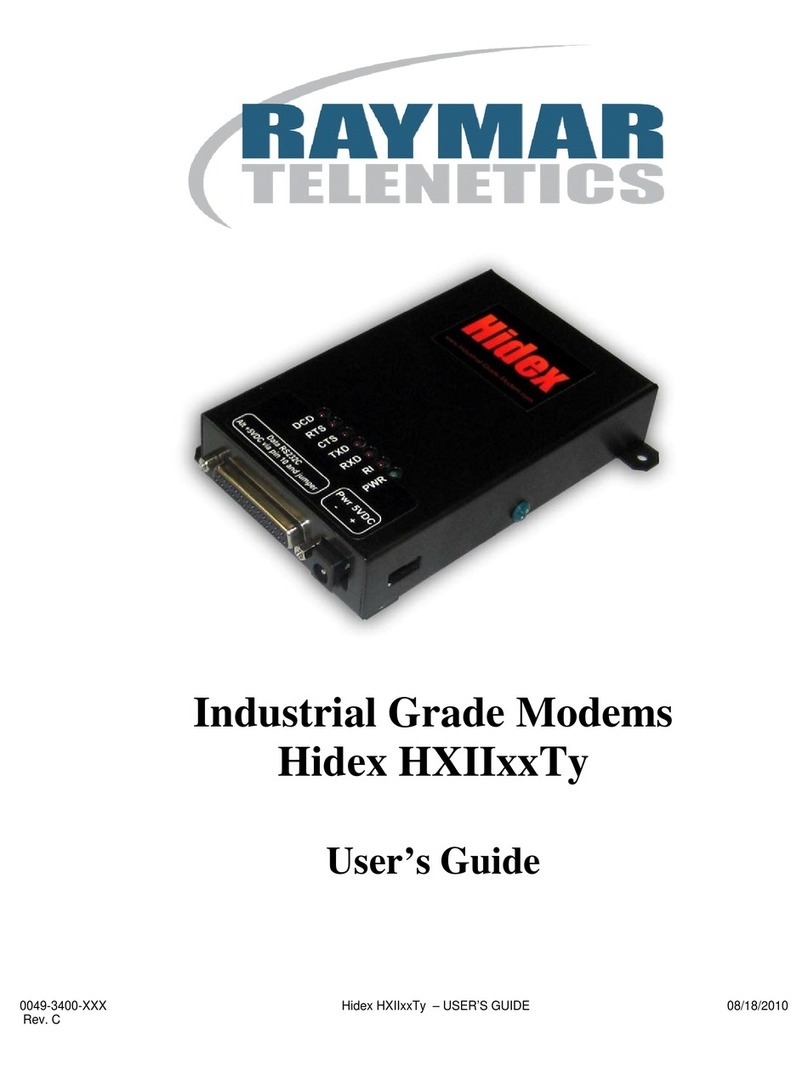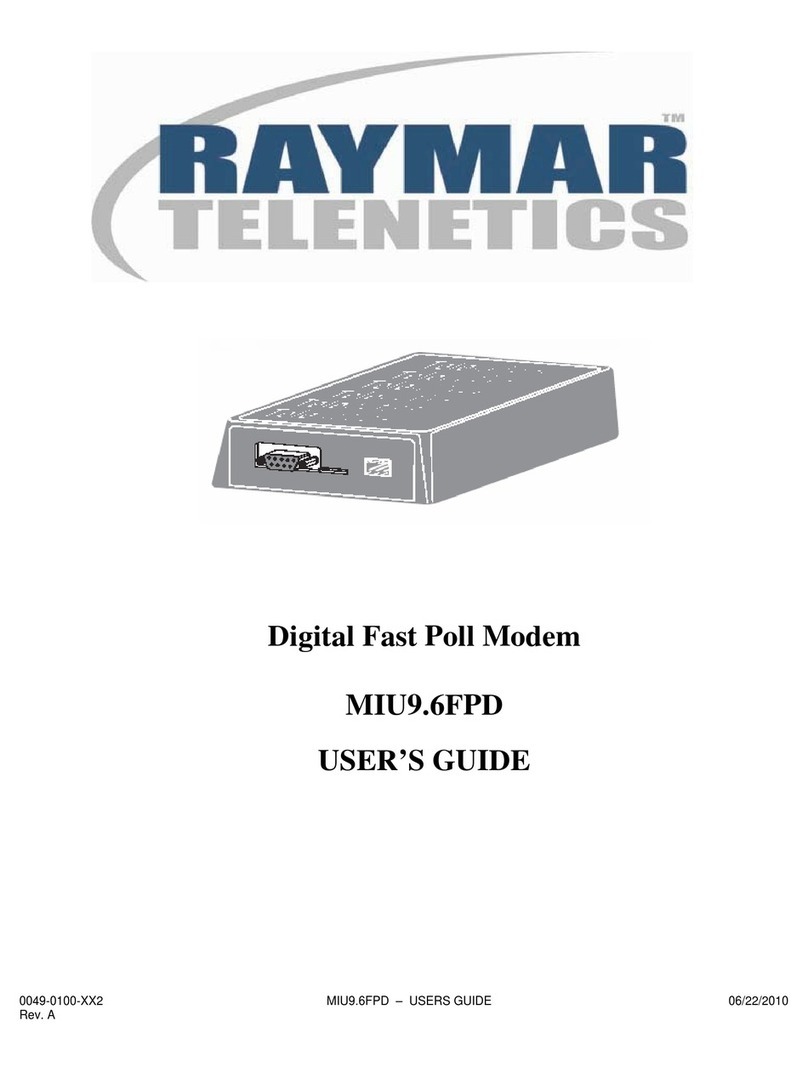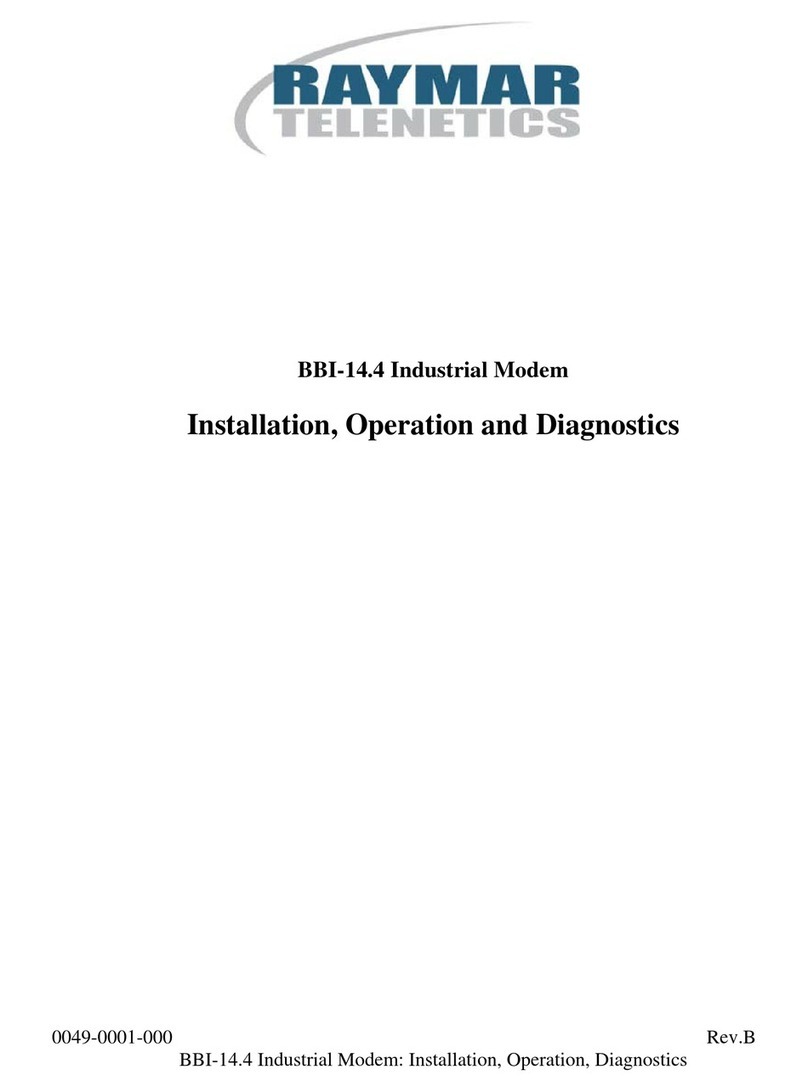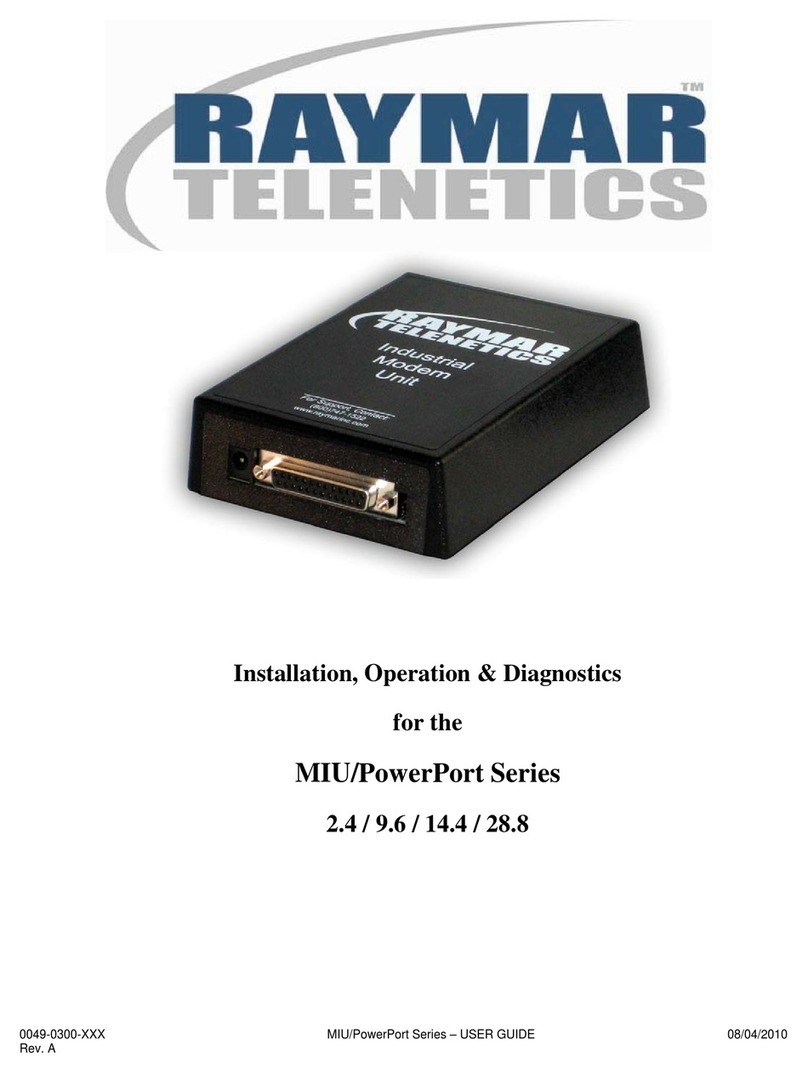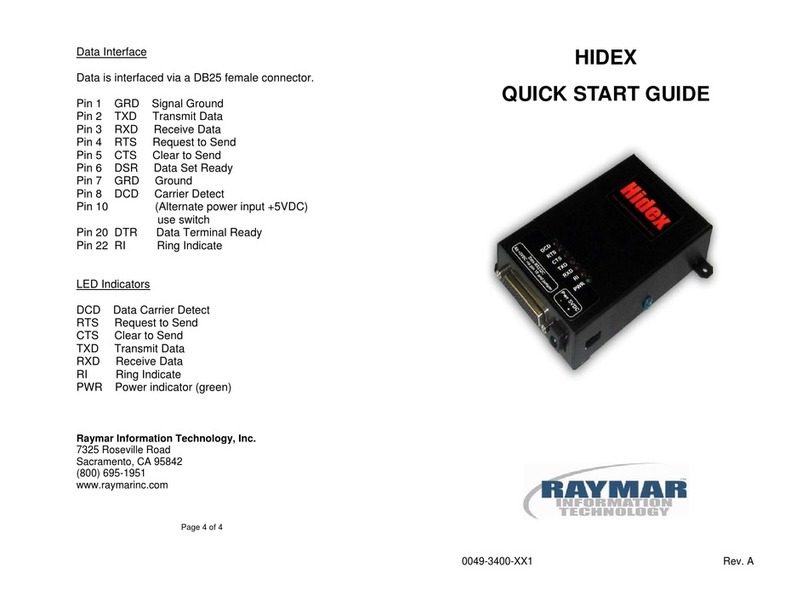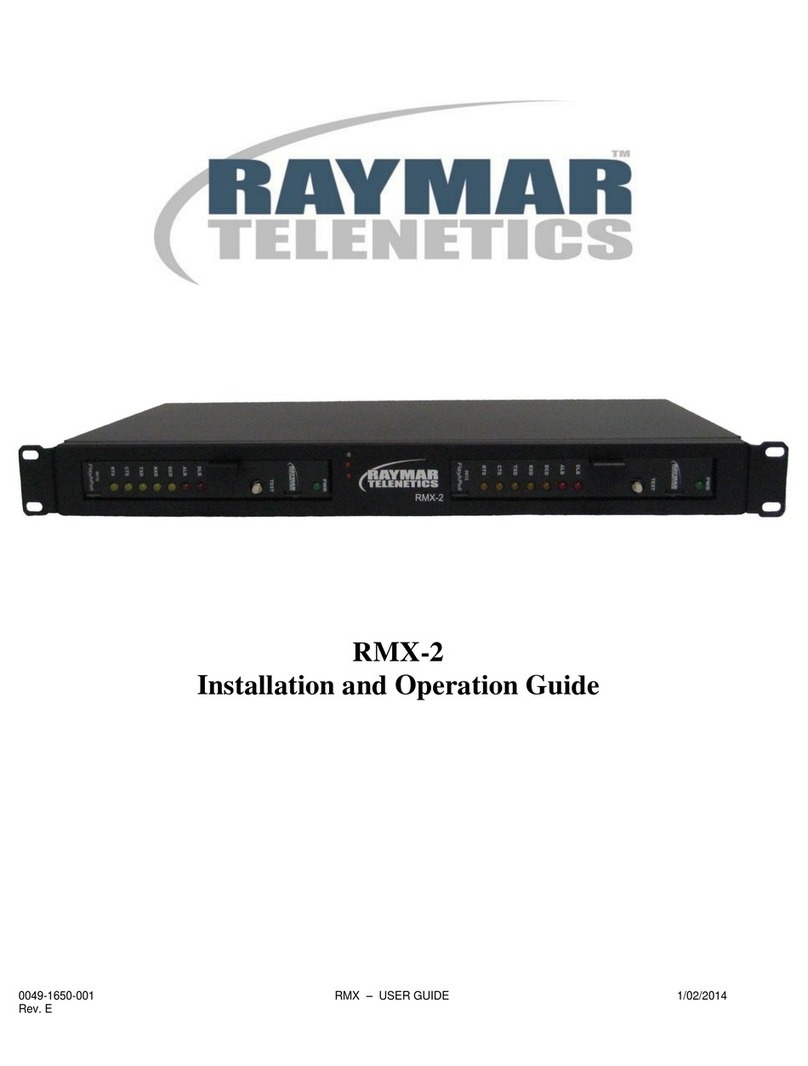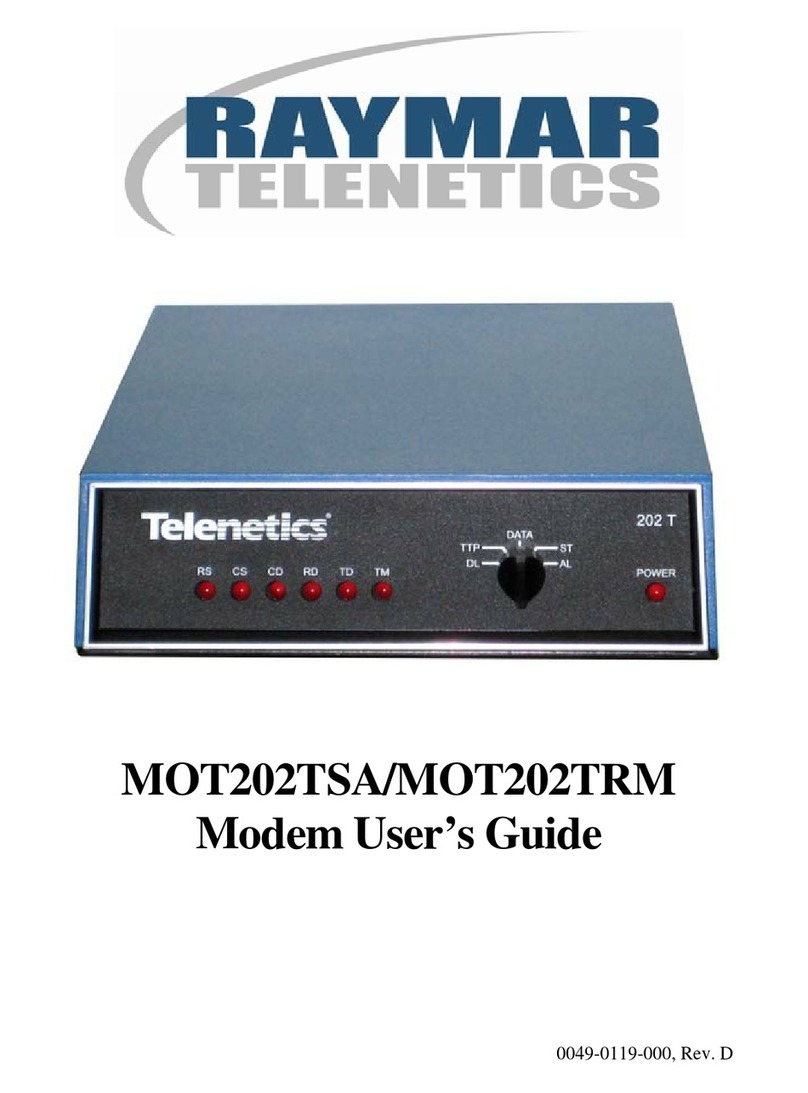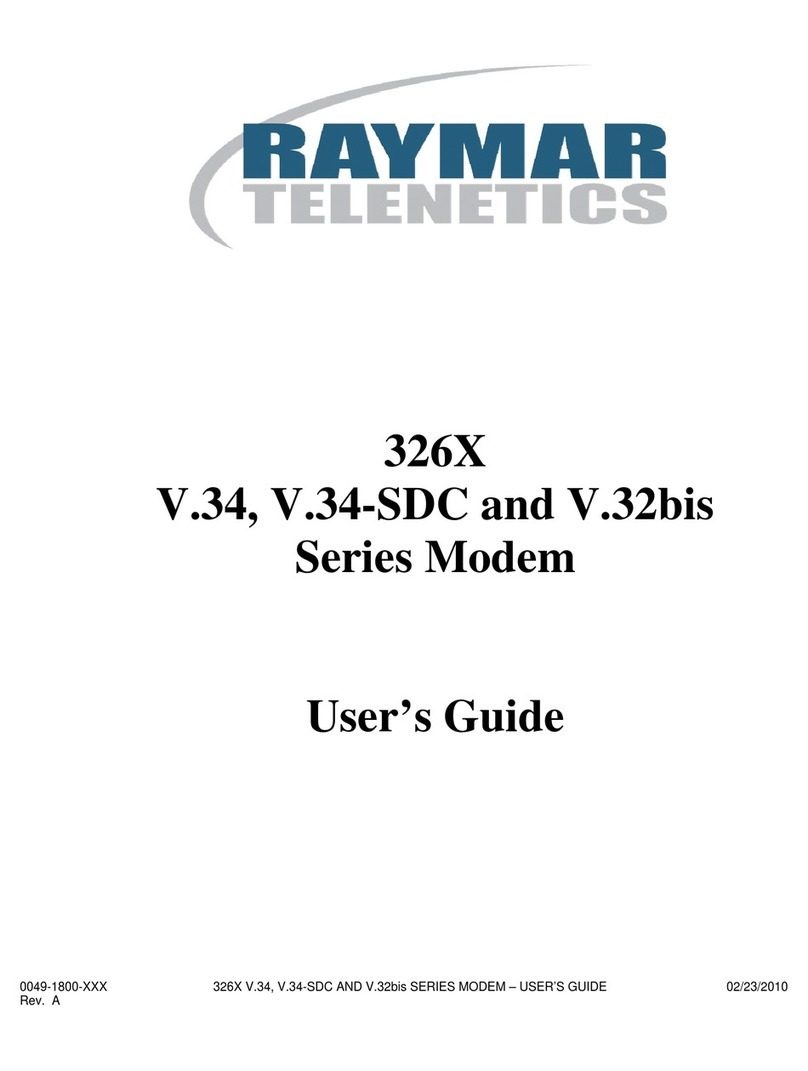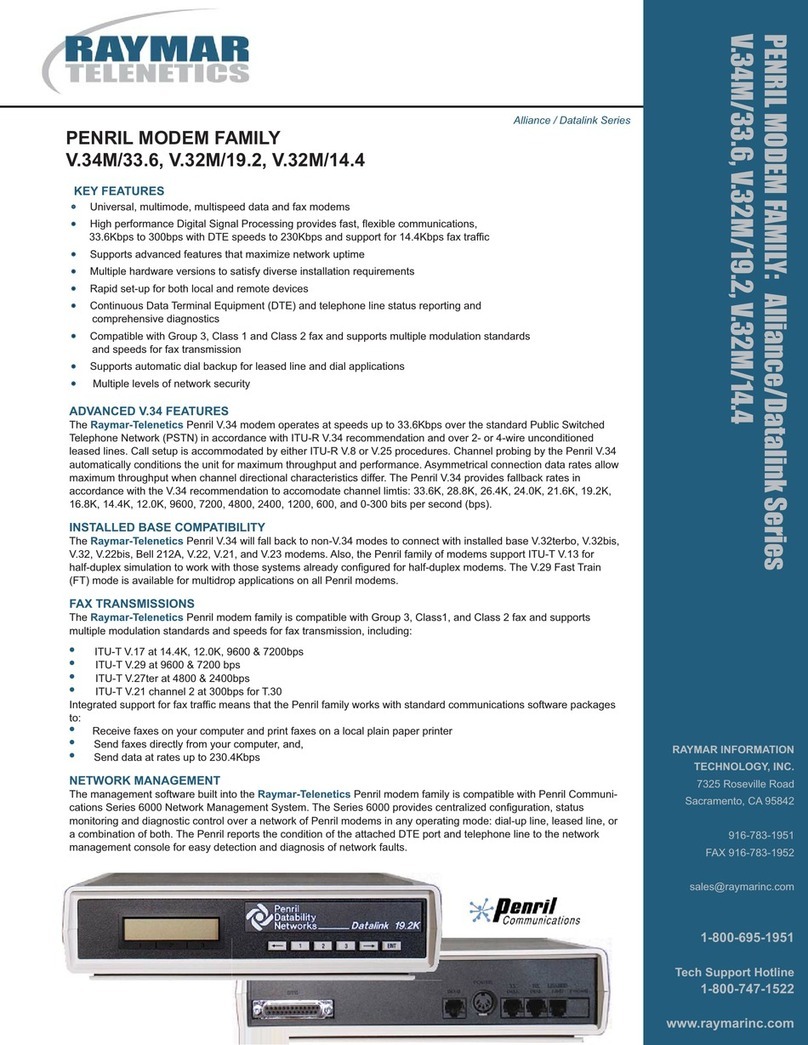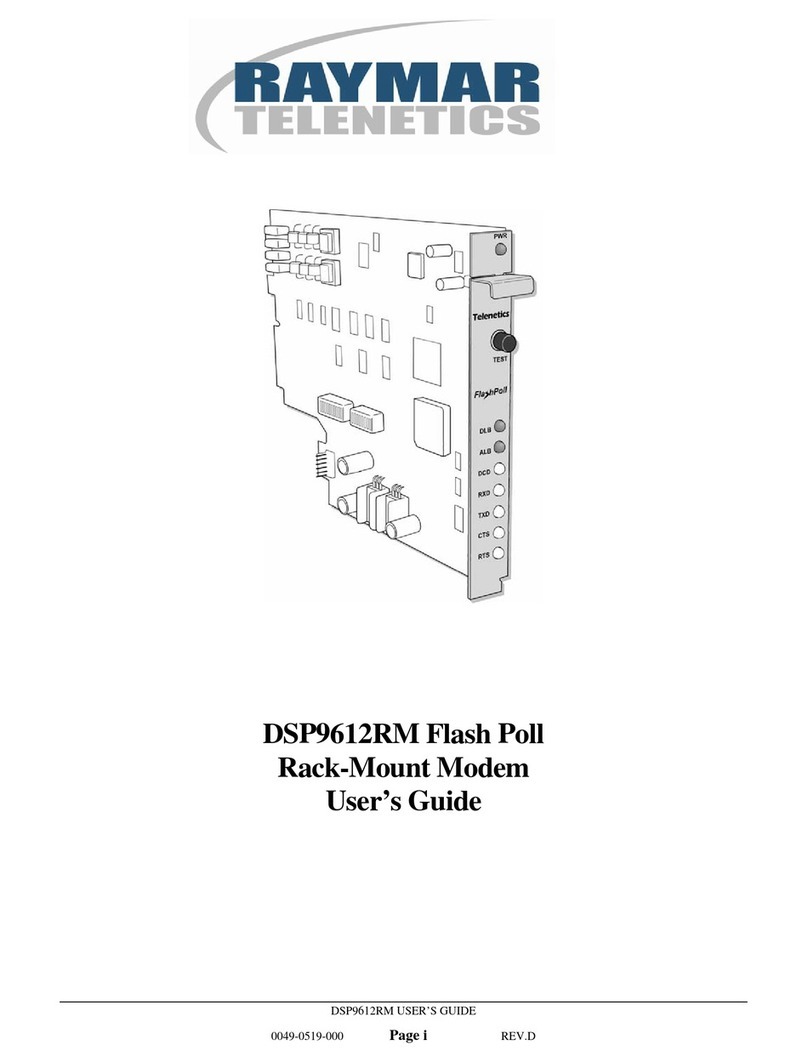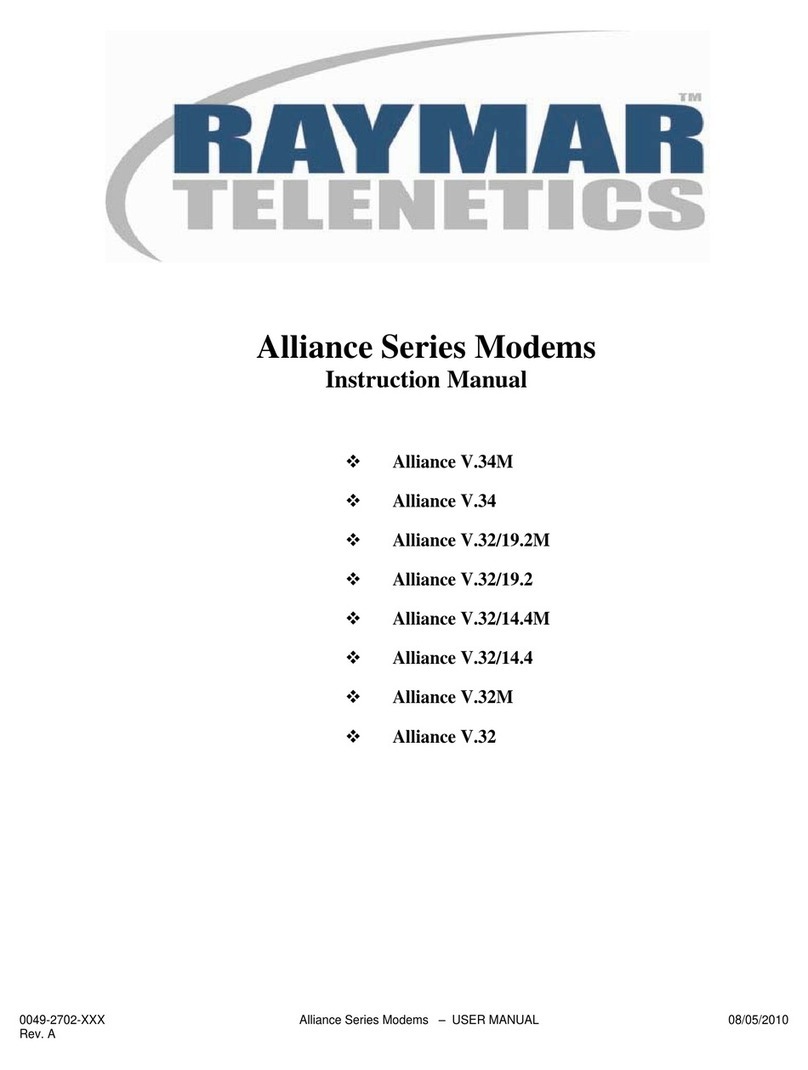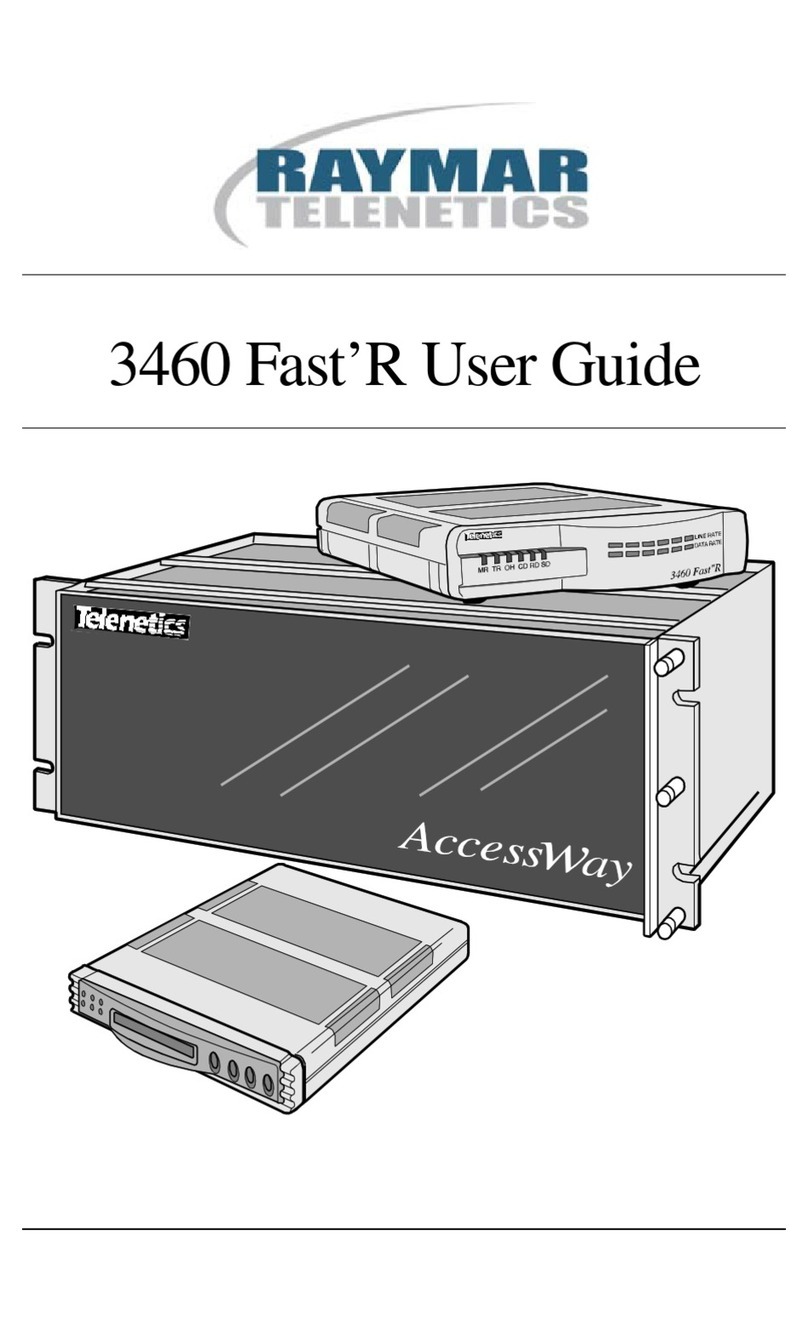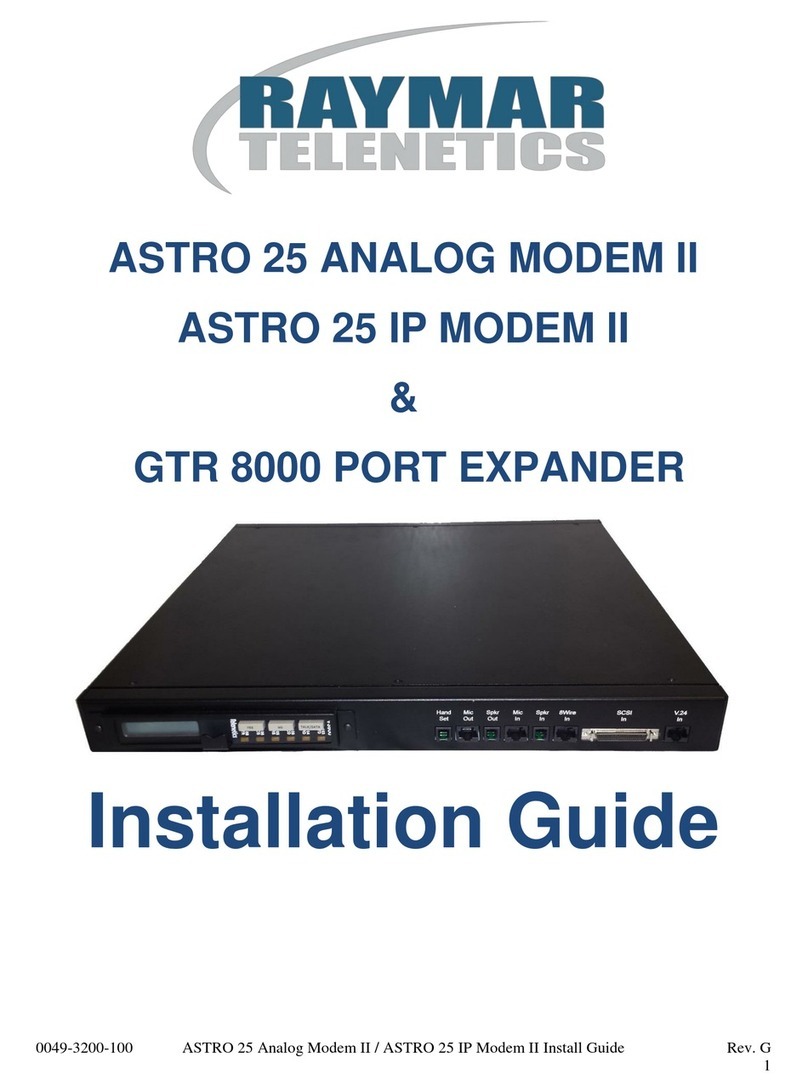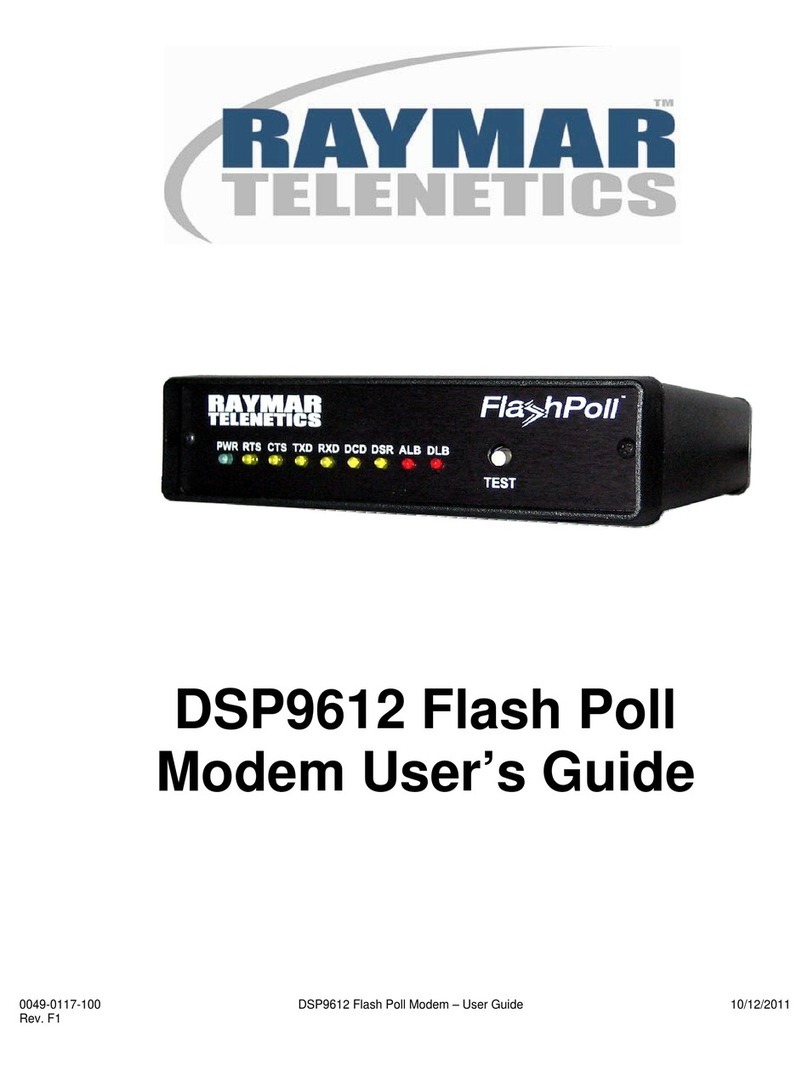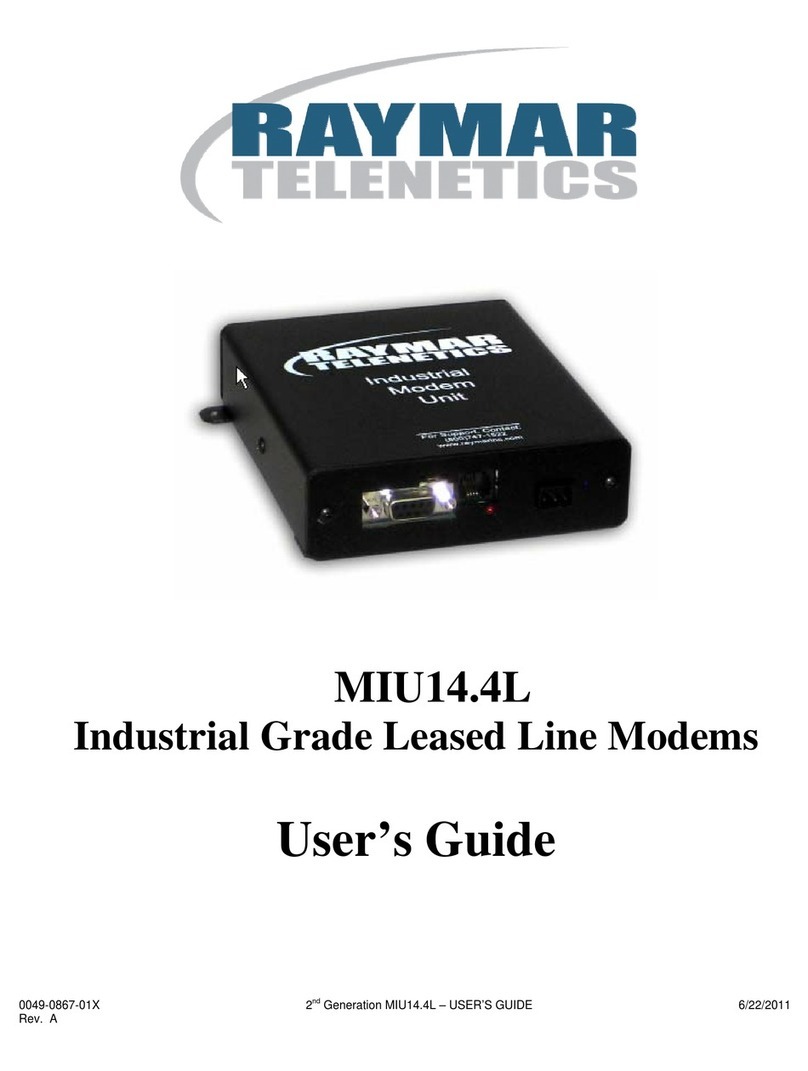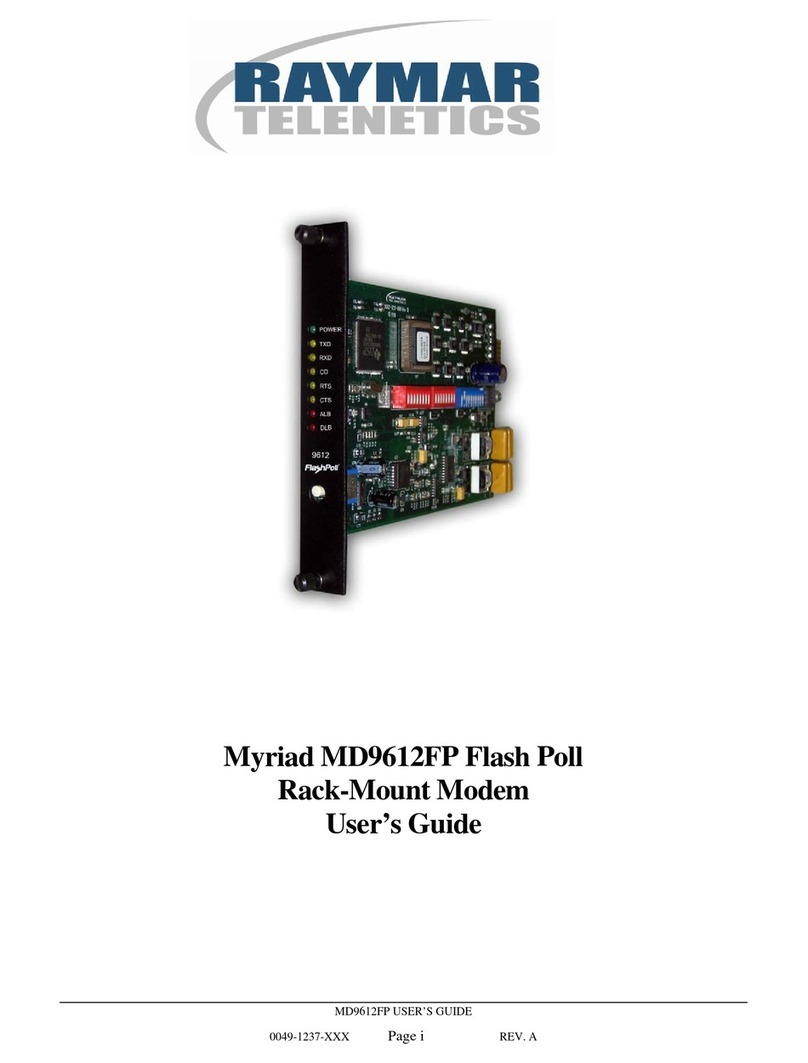
0049-0101-XXX MIU202T – USER GUIDE 06/29/2018
Rev. B Page 1 of 19
1. STANDARDS
Meets FCC Rules Part J, Subpart 15, Class A for radiated emissions.
2. PRODUCT OVERVIEW
The MIU202T is an industrial grade Bell 202T modem for connection to unconditioned and
conditioned, voice grade, type 3002 two or four-wire leased lines and metallic lines (e.g.; pilot
wires). It can be powered from a wide range of AC and DC power supplies, it is internally surge
protected on both the power and analog lines, and it will operate in temperatures from -40 to
+85ºC.
Internally, the MIU202T consists of a baseboard and a communication module. The baseboard
includes the power supply regulation and surge protection. The communication module is a
Raymar-Telenetics Pony ExpressTM PE202T Modem Module.
The MIU202T is packaged specifically for the harsh environments found in utility substations
and industrial facilities. Though functionally similar to commercial modems, the MIU202T
includes special features that make it particularly well suited for utility and industrial
applications:
Environment: The MIU202T has been designed specifically for use in harsh
environments. In addition to an extended temperature range (-40 to
+85ºC), the MIU202T includes surge, shock, vibration, and safety features
superior to those of conventional commercial modems.
Power Supply: The MIU202T can be powered from a broad range of AC and DC power
supplies, such as an auxiliary supply (e.g.; 12 VDC) from another piece of
equipment, 125 VDC from a station battery or a standard 120VAC.
Industrial: The MIU is packaged in a rugged, compact, non-metallic (ABS) enclosure.
Designed for unmanned locations, the MIUs do not include the array of
pushbuttons and LEDs normally associated with consumer-type modems.
Configuration is by dip switches. Standard industrial connectors for data,
analog and power interfaces allow reliable interconnection to other
industrial components.
